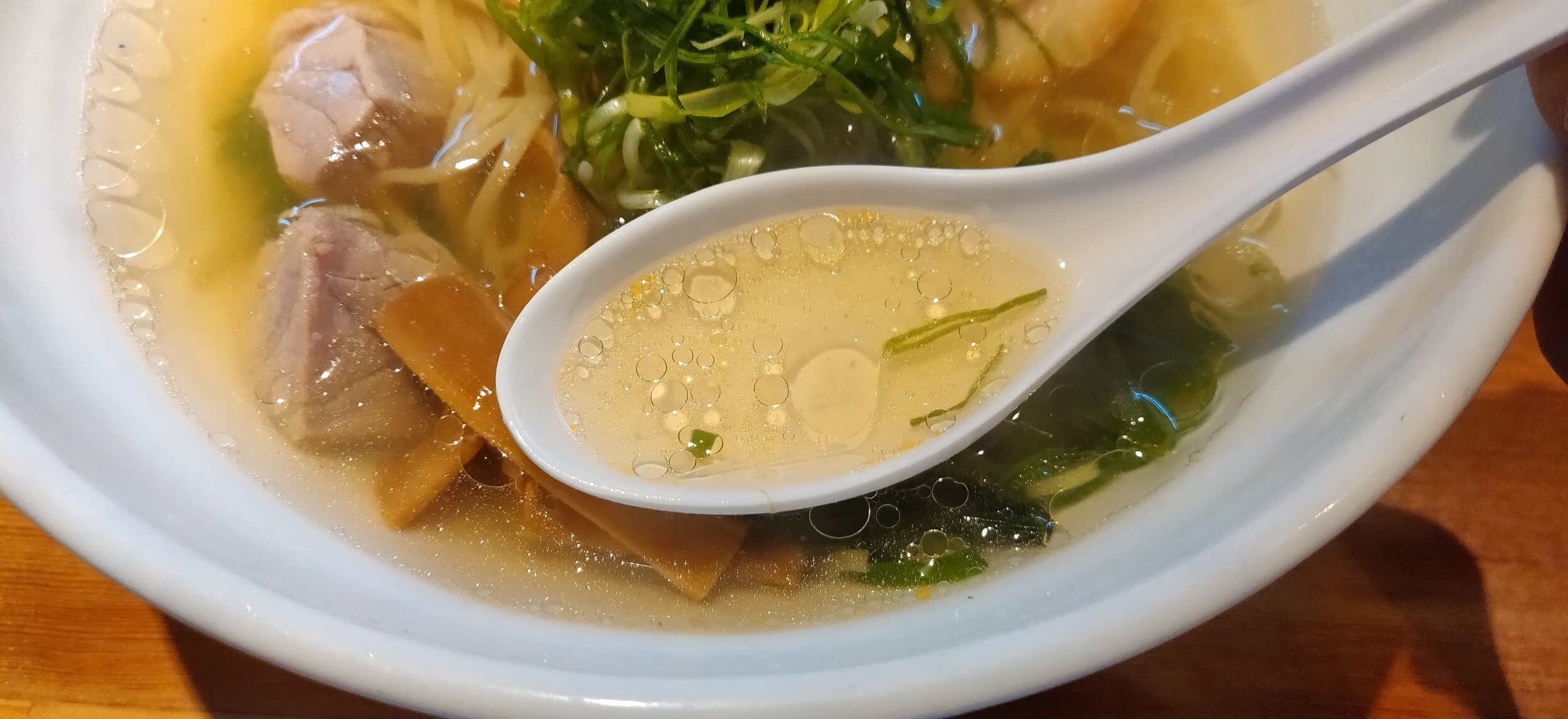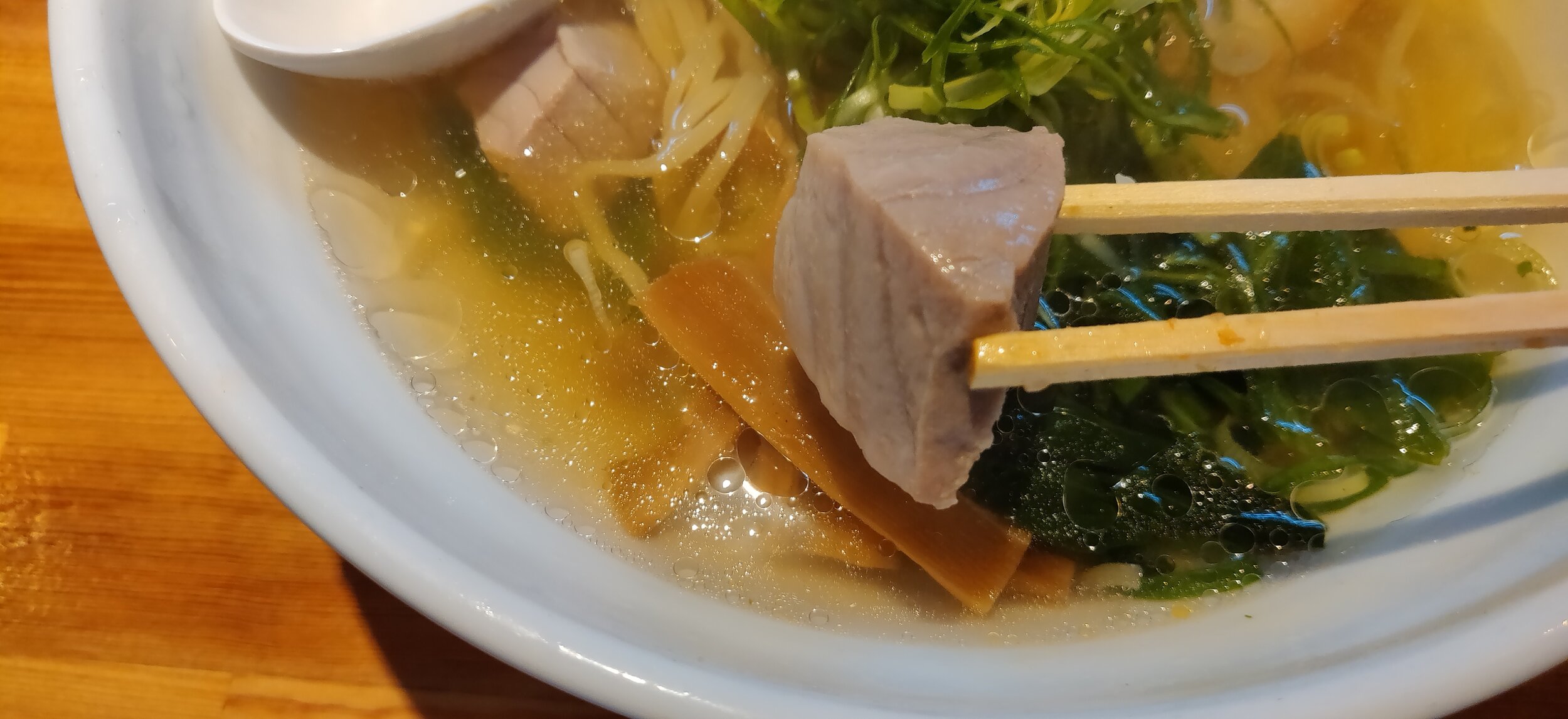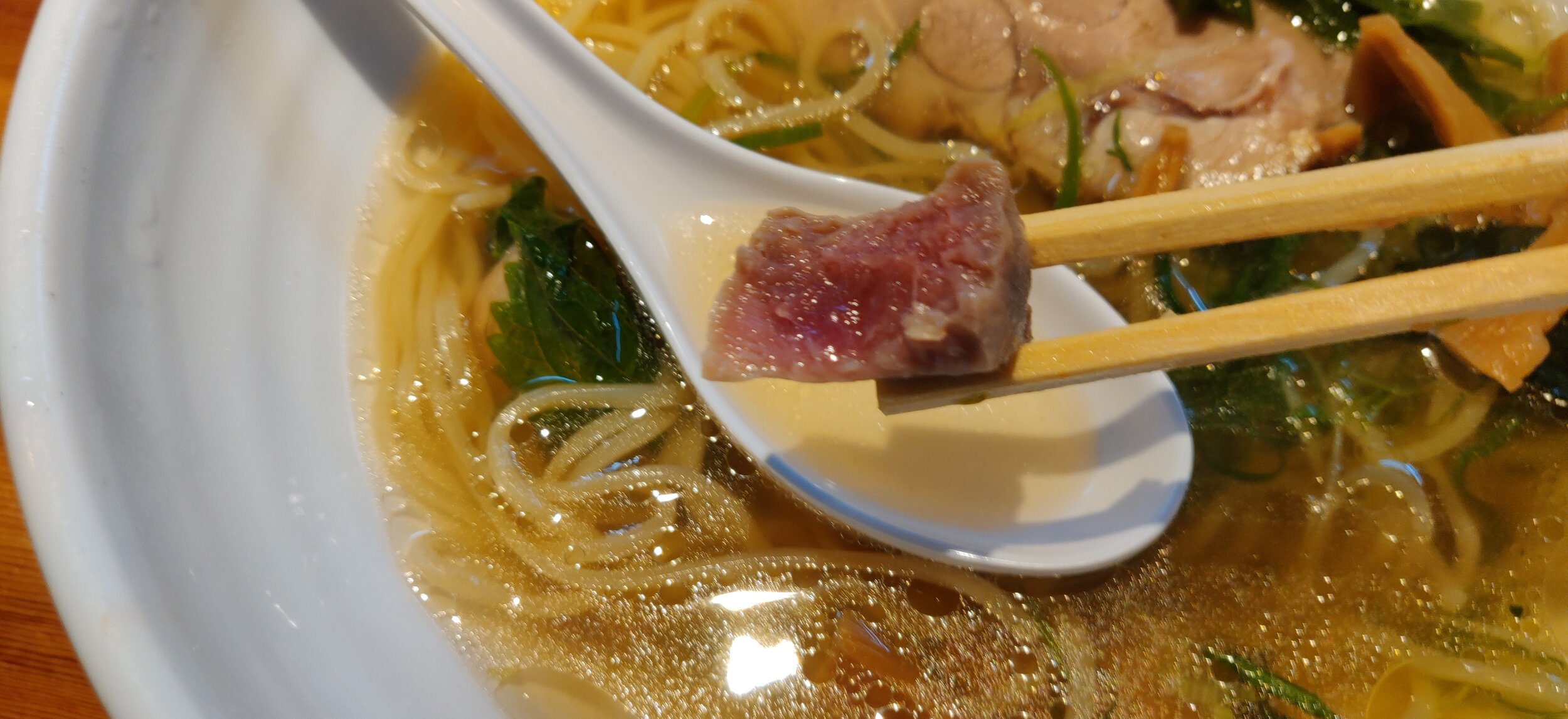Ramen Gantetsu (ラーメン巌哲); Best Seafood Broth Ramen?, Waseda
So generally my favorite ramen varieties tend to lean toward seafood based broths and while I will usually do a bit of research before heading to a ramen restaurant, I was pleasantly surprised to find the seafood based menu here at Gantetsu when I arrived. When I planned to come to Gantetsu a couple months ago now, the only reason I had was to cross off another 2018 Tabelog top 100 ramen from my list. I haven’t heard a ton of things about this shop, only that they are a hot spot for nearby Waseda college students. Arriving at around 11:00 for a 11:30 open, its reputation held strong as I sat behind a line of about 10 people, mostly college students. It’s a bit of a walk from Waseda station so I suggest coming early to beat the lines, especially on weekdays when a lot of the students will come for lunch. The exteriors look small, but it comfortably fits about 10 so you won’t have to go super early, but as they make your bowl to order in batches of two, if you miss the first ten cut off, you may end up waiting for a while.
Ordering here is essentially just like any other more modern ramen restaurants in Tokyo. You’ll make your purchases before you sit at the counter on the machine and hand your ticket to the chef at your seat. Menu here is relatively simple with the Shoyu ramen on the first row and Shio Ramen on the second. The Shoyu ramen is a chicken broth base and has a light tanrei soup while the Shio ramen is made with a type of tuna called Shibi Maguro which produces an incredibly umami filled broth. From left to right, you have regular Shoyu Ramen, Shoyu Ramen with extra char siu, and Shoyu ramen with sliced char siu. The second row has the Shio Ramen, Shio Ramen with extra pork char siu, and the two buttons to the right of those is extra pork and extra noodles. On the third row to the very right is a Tori Soba, a chicken ramen variety. Fourth row are all specialty items which will be explained on a sign outside. Luckily, because Waseda has a ton of study abroad folks, enough foreign clientele have dined at the shop that they recently put up English buttons. However, for whatever reason, they didn’t have translated buttons for the bottom two buttons which are the rice bowl items and alcohol. The second from the bottom is regular rice, raw egg over rice, Pork char siu over rice with mayo, Pork char siu over rice with green onions, and a specialty rice menu item. On the bottom row is beer and Japanese sake with a button for Moriawase, or assortment, which was not available during my visit and I honestly have no idea what it alludes to.
On this particular visit I decided on the aforementioned Shio Ramen with a bowl of pork char siu over rice with green onions on the side. First off, the Shio Ramen. Like I mentioned earlier, I didn’t do much research about Gantetsu before I made my visit, but while in line, I saw that an overwhelming majority chose this option over the Shoyu ramen based on reviews on ramendb. It was kind of overwhelming going through page after page of reviews and it was only on this ramen so I decided not to read any of the reviews and just go for the Shio without clouding my judgment beforehand. What came was this bowl filled with an assortment of toppings floating above a transparent soup and translucent noodles. The soup here is fantastic and I’m understating it as I honestly can’t think of a better word to describe how delicious it is. I would say, hands down, this was the clearest and cleanest, most umami filled seafood ramen I’ve ever had. It’s surprising how much flavor can be packed in to such a transparent looking soup. The tuna flavors are definitely present, almost like taking a bite of tuna sushi with how bold the flavor is. The shio tare seasoning sauce accentuates it almost like salt does to grilled fish. It’s quite difficult to explain, but you get the freshness you would if you were to eat a tuna sashimi, but the oily fattiness you would get if you ate it grilled. It’s an amazing combination of the two and makes for a savory, umami filled soup that’s to die for. You could see the bit of tuna oils floating above the surface of the soup and it adds the important fats ramen needs without any of the residual, impure flavors that it usually imparts. Based off my amateur taste palette, I would say tuna chunks were added along with a bit of roasted cheek bones and the backbone of the tuna. Hats of to the chef for whatever he adds in to the side as the savoriness, sweetness, and umami all balance perfectly in this broth.
Noodles here are thin cut and have a light wheat flour flavor, but has a bit of toasty, oat flavors that pairs with the soup similar to genmai brown rice pairs with tuna sashimi. In terms of texture, its cooked al dente and has a bit of a bite, but nothing out of the ordinary for most high end ramen shops. One thing that did stand out was that it was a bit translucent which, if I’m not mistaken, signifies that the noodles had been rested and aged for a few days. I didn’t get any of that through just tasting, but looking through each strand, they did give off those vibes visually. Best topping of the ramen goes to the shibi maguro, or tuna pieces. As you can see, the tuna is quickly cooked in hot water to firm up the edges then shocked in cold water to keep the middle raw. It’s a technique often used by sushi chef to impart flavors in to tuna while taking a bit of the raw, fishy flavor out of the pieces. The technique works perfectly here as the residual heat would have likely cooked the edges of the fish awkwardly and made for a weird texture, and this assured that you can enjoy the raw center. I was more than happy to taste a bit of high quality tuna and even better that it fits with the overall theme of the ramen.
The pork char siu and menma bamboo shoots also adorned my bowl with some thinly cut green onions and some raw seaweed. Pork char siu was very well cooked, using the shoulder so that there was a healthy balance of meatiness and fattiness. Surprisingly, it didn’t seem to be cooked sous vide, which I kinda expected from a restaurant of this caliber, but it was perfect as is. The pork was juicy, while having some nice flavors from the traditional marinating techniques. Menma bamboo shoots were nothing too special, but the seaweed was a great touch to remind you that this in fact was a seafood based ramen.
I finished my meal off with this pork char siu with green onions and I can’t say I recommend ordering it, but it did add to my enjoyment of my ramen. The dish itself is nothing special, just a bit of chopped up pork char siu over rice, but the toppings of green onions, dried seaweed, and a bit of goma sesame seeds adds incredible flavor changes to the soup of the ramen. So while I thought the rice bowl was mediocre, it was enhanced to new levels by adding leftover soup of the ramen in to it and enjoying it like a Japanese rice porridge. The nuttiness of the sesame seeds add to the light flavors of the broth by giving it some sharpness like an addition of oak to white wine. Could you enjoy it without it? Of course, but the complexities it adds mid meal makes it worth that extra couple hundred yen.
Overall this was one of my favorite bowls of the year. I think it was a combination of the surprise element of a unique tuna broth and the incredibly light, airy flavors it imparted, but it really hit my personal palette preferences to a tee. It’s a bit difficult to just go out and say you should go there because if you’re not a fan of seafood, it might not be the best choice for you. However, if you do enjoy a nice bowl of high quality seafood broth from time to time, this will be the place for you. Also, I have started running ramen tours in Tokyo and so if you would like me to take you here on a tour, please check me out over on my airbnb experiences site and book tour with me. If you end up going here on your own, let me know via any of my social media accounts. Enjoy!









